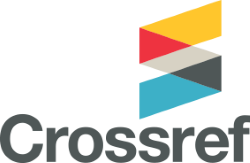Abstract
Penyakit stroke menjadi salah satu penyebab kematian tertinggi dan merupakan penyumbang ketiga kecacatan secara global. Jenis stroke yang paling umum terjadi di Indonesia adalah stroke iskemik. Sebagian besar penderita stroke mengalami penurunan kognitif dan motorik yang menyebabkan keterbatasan pada penderitanya dalam melakukan aktivitas sehingga keluarga memegang peranan penting pada kondisi penderita stroke. Penelitian ini bertujuan untuk mengetahui hubungan tingkat pendidikan dengan resiliensi keluarga penderita stroke iskemik serangan pertama. Penelitian ini adalah studi kuantitatif dengan desain penelitian cross-sectional yang menggunakan data primer pada bulan Januari-Februari 2022 di poli rawat inap Rumah Sakit Otak Dr. Drs. M. Hatta Bukittinggi (RSOMH). Sampel penelitian adalah keluarga dan penderita stroke iskemik di RSOMH yang berjumlah 229 orang berdasarkan kriteria inklusi. Pengumpulan data menggunakan instrumen resiliensi keluarga (RESILIENSI-GA). Analisis data menggunakan analisis univariat, analisis bivariat dengan uji chi-square dan analisis multivariat menggunakan Regresi Logistik Multivariat model kausal. Hasil analisis diperoleh bahwa 66,4% keluarga memiliki skor resiliensi sedang dan tinggi. Keluarga pasien yang memiliki tingkat pendidikan tinggi memiliki asosiasi dengan resiliensi keluarga yang baik yakni 1,9 kali lipat dibandingkan dengan pendidikan rendah setelah di kontrol variabel sosial ekonomi dan umur (POR 1,960, CI 95%: 1,20-1,62). Ketahanan keluarga pada pasien stroke merupakan suatu hal yang penting, mengingat dampak fisik dan psikis yang ditimbulkan oleh stroke. Dalam penelitian ini terdapat asosiasi antara pendidikan dengan resiliensi keluarga pasien stroke setelah di kontrol variabel sosial ekonomi dan umur.
References
- World Health Organization (WHO). Stroke, Cerebrovascular accident. Guidelines. 2020;(http://www.emro.who.int/ health-topics/stroke-cerebrovascular-accident/index.html).
- Kementerian Kesehatan RI. Riset Kesehatan Dasar tahun 2018. Lap Nas Riskesndas 2018 [Internet]. 2018;44(8):181– 222.
- Kementerian Kesehatan RI, Riset Kesehatan Dasar 2007. Kemenkes RI. 2007;
- Bradley JM, Hojjat M. A model of resilience and marital satisfaction. J Soc Psychol. 2017;157(5):588–601.
- Harris S, Sungkar S, Rasyid A, Kurniawan M, Mesiano T, Hidayat R. TOAST Subtypes of Ischemic Stroke and Its Risk Factors: A Hospital-Based Study at Cipto Mangunkusumo Hospital, Indonesia. Stroke Res Treat. 2018;2018.
- Admadeli YP, Embu-Worho PM. Family and Social Environmental Factors in the Effects on Family Resilience: A Systematic Literature Review. Proc Int Conf Psychol Stud (ICPSYCHE 2020). 2021;530(Icpsyche 2020):223–7.
- Simon JB, Murphy JJ, Smith SM. Understanding and Fostering Family Resilience. Fam J. 2005;13(4):427–36.
- Myers-Walls JA. Strengthening Family Resilience (3rd ed.) .Vol. 9, Journal of Family Theory & Review.2017.584–588 p.
- Mackay R. Family resilience and good child outcomes: An overview of the research literature . Soc Policy J New Zeal. 2003;20(January 2003):98–118.
- KEMENPPPA. Pembangunan Ketahan Keluarga. Badan Pus Stat. 2016;
- Takumansang VB. Resiliensi Keluarga Pada Keluarga Caregiver Bagi Pasien Pasca Stroke. Fak Keperawatan Univ Kristen Satya Wacana. 2017;
- BPS. Potret Pendidikan Indonesia 2020. 2020;430112.
- Bhana A, Bachoo S. The determinants of family resilience among families in low-and middle-income contexts: A systematic literature review. South African J Psychol. 2011;41(2):131–9.
- Pudjiati SRR, Reksodiputro SHD, Purwono RU. Family Resilience Model: The Influence of Cultural Identity, Coping, Family Strain, Socioeconomic Status, and Community Support on Family Resilience among the Batak Toba Ethnic Group. Makara Hum Behav Stud Asia. 2021;25(2):153–69.
- Black K, Lobo M. A Conceptual Review of Family Resilience Factors. J Fam Nurs. 2008;14(1):33–55.
- Fry K., Firestone R. CNM. Measuring equity with nationally representative wealth quintiles. Popul Serv Int [Internet]. 2014;1–27.
- Lisa Hjelm, Astrid Mathiassen, Darryl Miller AW. WFP, Creation of a Wealth Index; VAM-Guidance paper. Wfp. 2017;1–26.
- Herdiana I, Suryanto D, Handoyo S. Family Resilience: A Conceptual Review. 2018;(August 2019).
- Cohen M, Baziliansky S, Beny A. The association of resilience and age in individuals with colorectal cancer: An exploratory cross-sectional study. J Geriatr Oncol [Internet]. 2014;5(1):33–9.
- Weitzel EC, Löbner M, Röhr S, Pabst A, Reininghaus U, Riedel-Heller SG. Prevalence of high resilience in old age and association with perceived threat of covid-19—results from a representative survey. Int J Environ Res Public Health. 2021;18(13).
- Gooding PA, Hurst A, Johnson J, Tarrier N. Psychological resilience in young and older adults. Int J Geriatr Psychiatry. 2012;27(3):262–70
- Gómez A. Associations between family resilience and health outcomes among kinship caregivers and their children. Child Youth Serv Rev. 2021;127:106103.
- Hasanah VR, Jubaedah Y. Social Problems and Family Education Role to Build Family Resilience. 2018;1(229):306– 10.
- Sunarti E. Inventori Pengukuran Keluarga. Departemen Ilmu Keluarga dan Konsumen Fakultas Ekologi Manusia; 2021.
- Ogston SA, Lemeshow S, Hosmer DW, Klar J, Lwanga SK. Adequacy of Sample Size in Health Studies. Biometrics. 1991;47(1):347.
Recommended Citation
Helda, Helda
(2022)
"Hubungan Tingkat Pendidikan dengan Resiliensi Keluarga Penderita Stroke Iskemik Serangan Pertama di RS Otak Dr. Drs. M. Hatta (RSOMH) Bukittinggi 2022,"
Jurnal Epidemiologi Kesehatan Indonesia: Vol. 6:
Iss.
1, Article 2.
DOI: 10.7454/epidkes.v6i1.5876
Available at:
https://scholarhub.ui.ac.id/epidkes/vol6/iss1/2
Included in
Epidemiology Commons, International and Community Nutrition Commons, Public Health Education and Promotion Commons, Reproductive and Urinary Physiology Commons






